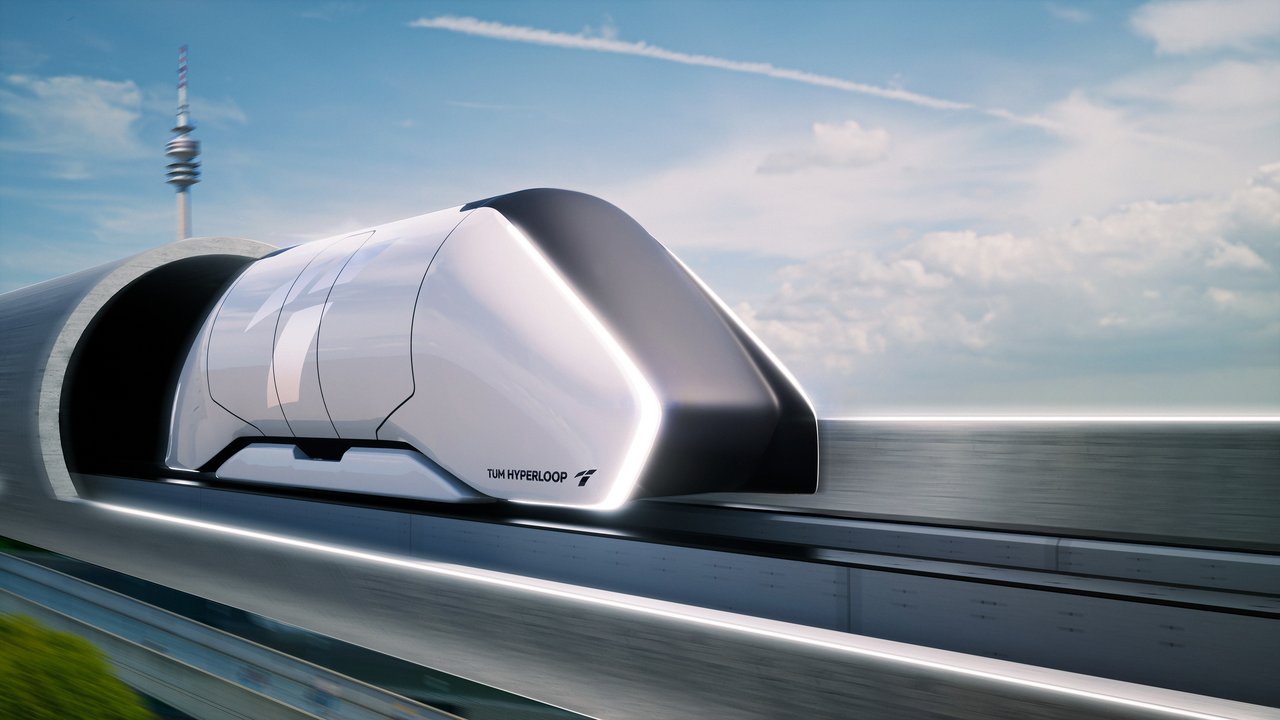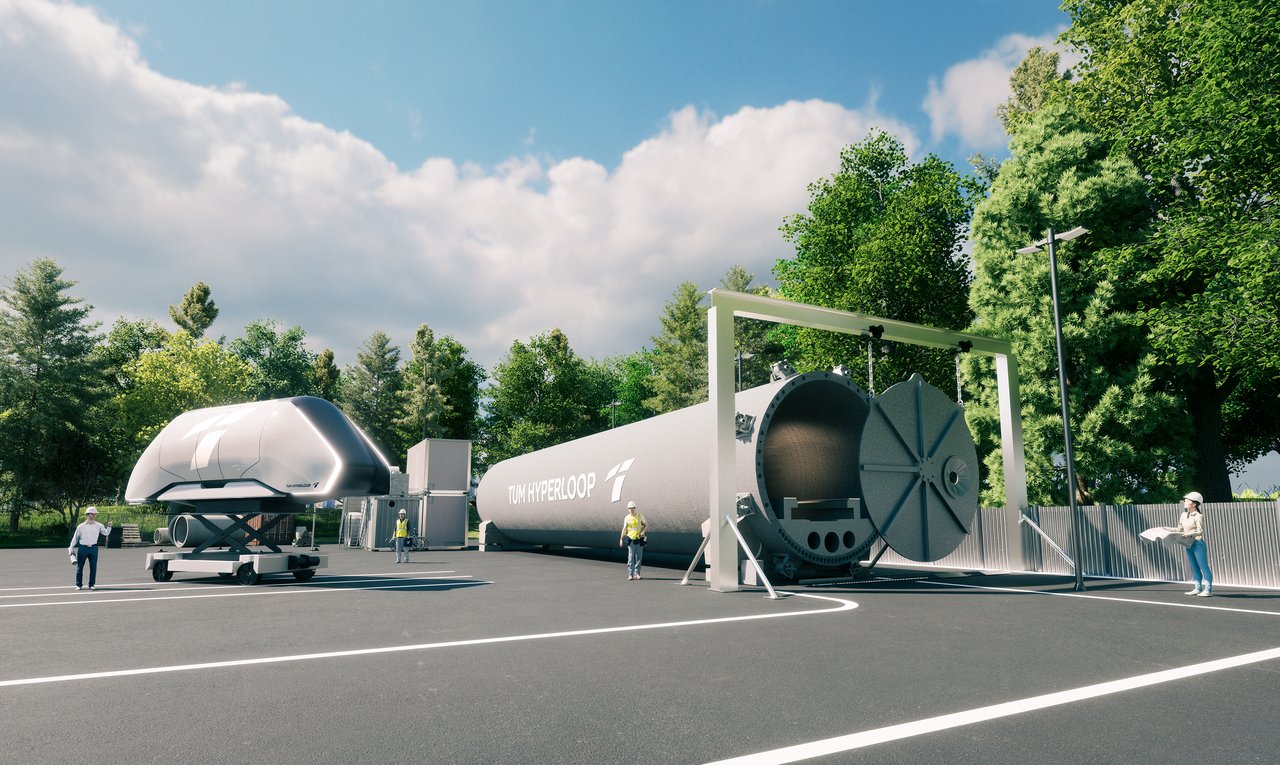The TUM Hyperloop Programm
Speeding up the journey to a sustainable future

A high-speed train that travels through a tube at close to the speed of sound: What sounds like science fiction is becoming reality in Bavaria. The TUM Hyperloop Program will develop and test the necessary technologies as well as conduct a concept analysis of future technical and economic feasibility. Fueled by the passion of the student initiative and funded by the Bavarian State Government, a large, interdisciplinary research program on Hyperloop has been underway at the Department of Aerospace and Geodesy since 2019. Many professorships and chairs from different areas of the university are participating in the new TUM Hyperloop program. The many competencies of the University of Excellence come together in this highly interdisciplinary research area. As before, many motivated students are involved in the program, coordinated by the non-profit association NEXT Prototypes e.V.
"The Hyperloop vision is becoming reality at the Technical University of Munich. We are combining specialized knowledge from various fields such as drive and high-power technologies, lightweight design, traffic route construction and geodetic engineering to develop a functional and safe technology for the super-high-speed train. Additionally we have the pioneer spirit, enthusiasm and invaluable experience of the TUM Hyperloop student team. The team has already built several prototypes of the transport pod and won the SpaceX Hyperloop Pod Competition in Los Angeles four consecutive times to emerge victorious as the speed world champion. The Department of Aerospace and Geodesy at the TUM Ottobrunn/Taufkirchen campus near Munich is ideal for the focused ongoing development of this knowledge and for promoting our talented young individuals' passion for the innovative technologies of the future."
Prof. Thomas F. Hofmann, President of TUM
The Hyperloop Concept and the SpaceX Hyperloop Pod Competition
In 2013, Elon Musk presented a white paper with a concept for an ultra-high-speed ground transportation system: the so-called Hyperloop. The Hyperloop consists of partially evacuated tubes, in which a pod is able to move and transport people and goods. Thanks to the partial vacuum and by using contactless levitation and propulsion systems, it should be possible to significantly reduce travel times in rail transportation. At the same time, despite its shorter travel times, the Hyperloop is more environmentally friendly than the airplane. The publication of the concept sparked great interest worldwide in novel, climate-neutral high-speed transportation systems. In the summer of 2015, the aerospace company SpaceX launched the "SpaceX Hyperloop Pod Competition" to further explore his vision: student teams from around the world were invited to submit their concepts for the "pod". Shortly after the competition's announcement, a student group was formed at TUM, eager to respond to the call and participate in the competition. Over the years, TUM's student initiative was repeatedly able to prevail against international competing student teams from renowned universities. Most recently, the team from Munich won the SpaceX Hyperloop Pod Competition in July 2019 – for the fourth time in a row, breaking its own speed record of 482 km/h.

Research
Our mission is to develop a climate-neutral, ground-based transportation system, meeting the demand for ultra-fast connections between mobility hubs.
In order to enable a thorough research of high-speed transport systems, two complementary research objectives are pursued in parallel within the TUM Hyperloop program.
Technology development
Between 2020 and 2023, a full-scale technology demonstrator will be developed and built. The demonstrator will consist of a 24-meter-long vacuum tube and a matching human-sized capsule. The technical implementation is crucial for the development of a future Hyperloop system. Integration and functional tests are to be carried out on the demonstrator in order to identify problems at an early stage and explore solutions that make technical and economic sense. In addition, experimental data will be collected that can be used for concept analysis.
Concept analysis
Parallel to the development and testing of the technology, modeling and analysis of the researched system as well as its large-scale implementation are necessary. This will test various concepts for technical and economic feasibility and improve system capability in the long term. In addition, potential safety risks will be investigated and identified at an early stage, and suitable measures will be developed. Finally, proposals for suitable implementation options in the existing traffic infrastructure are to emerge from these investigations.
If you are interested in being part of the program, you can check out the page apply.tumhyperloop.com.
Contributing Chairs
- Prof. Dr. Thomas Hamacher, Lehrstuhl für Erneuerbare und Nachhaltige Energiesysteme bzw. Chair of Renewable and Sustainable Energy Systems
- Prof. Dr. Agnes Jocher, Professur für Sustainable Future Mobility bzw. Assistant Professorship of Sustainable Future Mobility
- Prof. Dr. Oliver Fischer, Lehrstuhl für Massivbau bzw. Chair of Concrete and Masonry Structures
- Prof. Dr. Klaus Drechsler, Lehrstuhl für Carbon Composites bzw. Chair of Carbon Composites
- Prof. Dr. Sebastian Steinhorst, Professur für Embedded Systems and Internet of Things bzw. Associate Professorship of Embedded Systems and Internet of Things
- Prof. Dr. Florian Holzapfel, Lehrstuhl für Flugsystemdynamik bzw. Institute of Flight System Dynamics